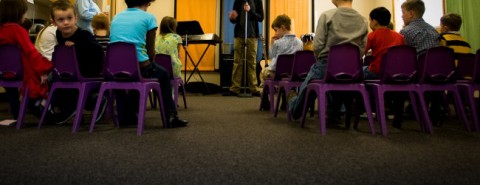What reaches children? The Sunday school challenge
When some of us think of Sunday school, we envision a group of children in child-size chairs listening to an adult read a Bible story. Behind them is a bulletin board filled with maps of the Holy Land and the children’s art work, with a chart on the wall boasting lines of gold stars for each child’s attendance. Everyone colors in a workbook and can’t wait to take home the handout that the teacher distributes.
The reality is much more varied and uncertain. As an editor and Christian formation specialist, I hear teachers report that “faithful families,” those that used to attend once a week, now attend only once or twice a month. The children are less willing to sit quietly listening to one adult and are eager, accustomed to and restless for programs that involve them in active, participatory roles. And no more two-sided text-heavy handouts. Any hands-on materials must compete or coordinate with technological and media entertainments. Now we see Sunday school curricula marketed with pop music CDs, cheesy videos, Internet companion sites and cheap trinkets—all to make the lesson entertaining and easy to use.
In addition hearing about poor attendance, I hear about lack of commitment, the cost of running an education program (and buying the materials mentioned above) and the declining number of paid directors of Christian education. When I’m asked to recommend “the best curriculum,” the inquirer wants one that will encourage families to attend and keep attending week after week. The same curriculum should be something that a volunteer can read the night before and teach the next morning. An impossible request.






